You can live in the Maldives for considerably less than in the U.S.; overall costs run about 28–34% lower, with rent roughly 45% cheaper. In Malé you’ll pay more—one-bed city units hit $1,450–1,640—while outer islands drop housing to around $622. Daily meals, transport and utilities are strikingly cheaper: expect $6 for a cheap meal, $0.70–$0.94 fares and $162 monthly utilities. If you want detailed monthly budgets, housing tradeoffs and health or schooling costs, keep going.
The Maldives vs. U.S. Cities: Overall Cost Comparison
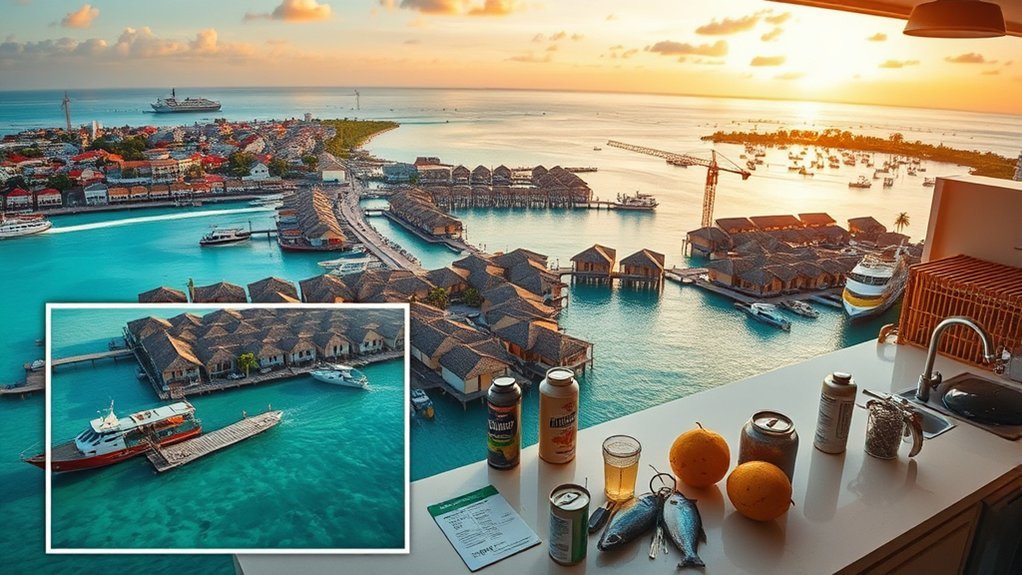
While the Maldives may feel remote, you’ll often pay less to live there than in many U.S. cities: overall living costs run about 28.5% lower than the U.S. when you exclude rent and 34.0% lower when you include it.
If you’re comparing cost of living, key savings show up in rent, transport, utilities, and food. Rent is roughly 45.1% cheaper—one-bedroom city-center units average about $886 versus $1,742 in the U.S.
Public transport fares drop to about $0.70 per ride compared with $2.50, cutting daily commuting costs. Utilities for an 85m² apartment average $162 monthly, around 44.3% less than U.S. norms.
Eating out stays economical too, with cheap restaurant meals near $6 versus $20 stateside. Taken together, these line-item differences mean you’ll stretch a budget further in the Maldives, especially if you prioritize lower recurring expenses and weigh lifestyle trade-offs against higher import-related prices.
Housing and Monthly Rent Across Islands and Malé
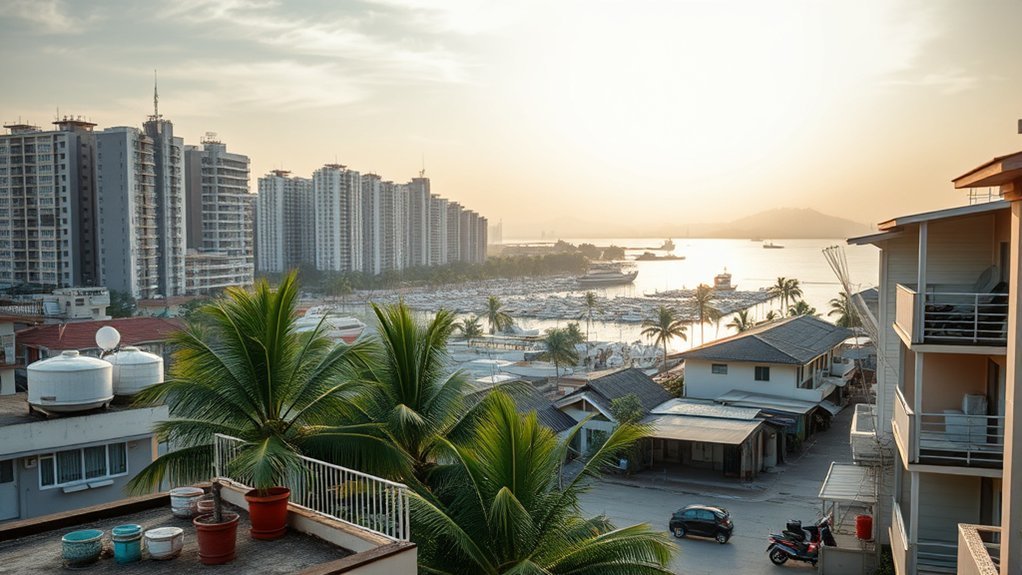
Having seen overall savings versus U.S. cities, you should next look at where those savings actually occur: housing.
You’ll find clear splits between Malé and outer islands. Renting a modest one-bedroom apartment in Malé typically costs Rf 22,000–25,000 ($1,450–$1,640) monthly, while average rent for a one-bedroom apartment outside the city center is about Rf 685.4 ($622).
For a family of four, housing expenses in Malé rise to Rf 55,000–60,000 ($3,600–$3,950) per month. Overall, rent in the Maldives runs roughly 45.1% lower than in the United States, but Malé’s cost of living can be nearly twice that of local islands, squeezing affordability for urban residents.
If you’re on a budget, choosing outer islands reduces monthly housing expenses substantially; if you need city access or services, expect to pay a premium. Use these benchmarks to model monthly budgets and weigh proximity versus savings.
Food, Groceries, and Dining Out Prices
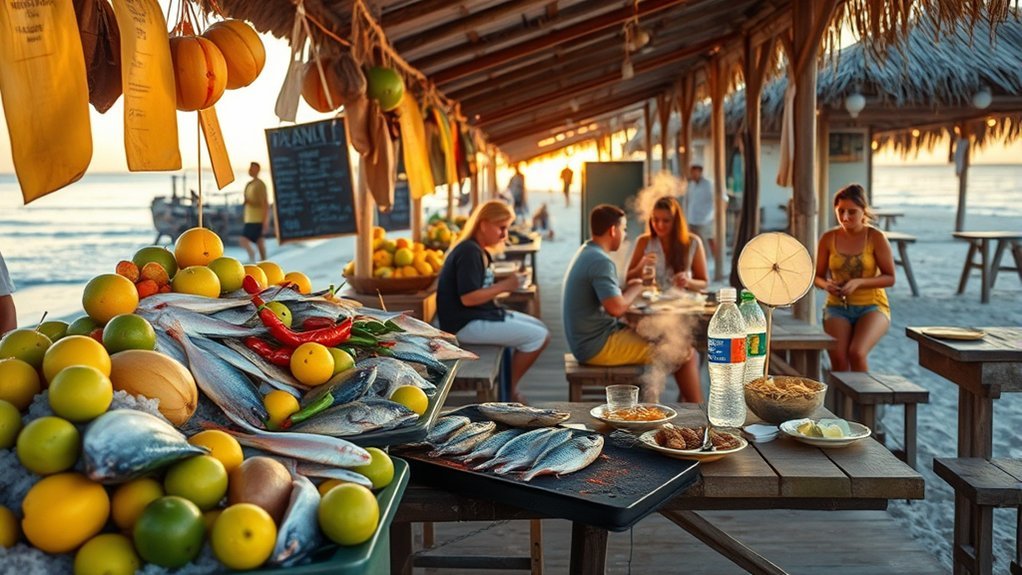
Because food and dining are where daily savings add up, you’ll notice the Maldives is considerably cheaper than the U.S. for everyday meals and staples: a cheap restaurant meal runs about $6 (Rf 91) vs. $20 in the U.S., a mid-range three-course dinner for two averages $48.70 (Rf 740) vs. $75, and local beer is roughly $4.70 (Rf 71) compared with $6; groceries follow the same pattern—fresh bread at $1.60 vs. $3.60 (-57.3%) and rice (1 kg) at $1.10 vs. $4.60 (-75.9%)—so if you plan meals and shop locally you can cut your food budget drastically.
| Item | Maldives vs. U.S. |
|---|---|
| Cheap meal | $6 vs. $20 |
| Mid-range dinner (2) | $48.70 vs. $75 |
You’ll want to focus on local markets and staples—rice, bread, seafood—to maximize savings. Eating out sparingly and buying groceries locally reduces monthly food spend considerably. Track prices per kg and per meal to compare saving strategies across islands and Malé.
Healthcare, Insurance, and Education Expenses
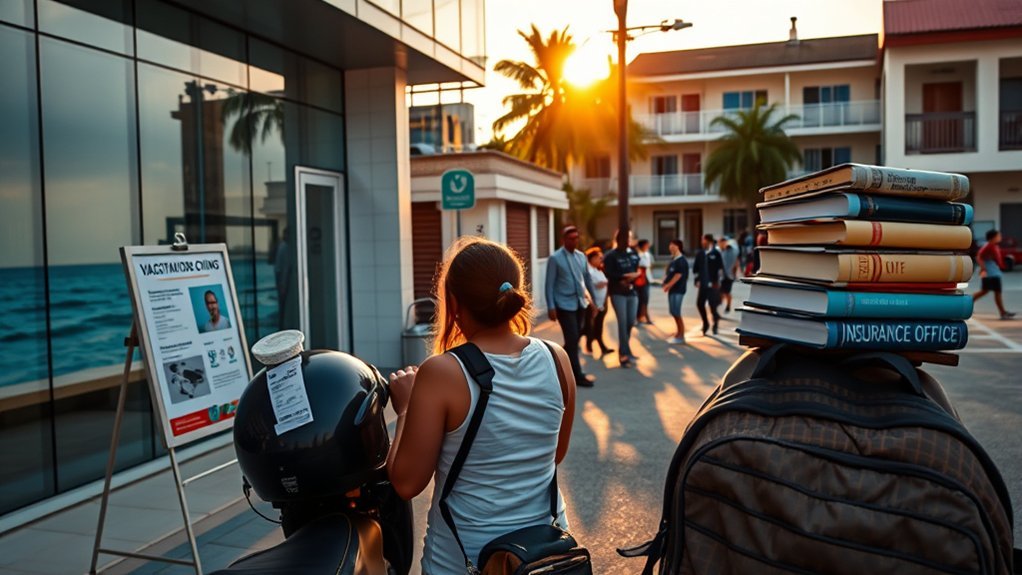
If you’re budgeting for life in the Maldives, factor in mandatory public health coverage for registered expatriate workers—valued at about Rf 100,000 ($6,500) per year and covering basics like doctor visits, diagnostics, emergency care, meds, and limited dental—while planning extra for private or international insurance to cover specialist care and serious emergencies.
That public package considerably lowers routine healthcare expenses, but access to specialists or serious treatment often means out-of-pocket bills or evacuation costs. You should budget separately for private insurance premiums; comparative estimates put reasonable international plans well above the public valuation, depending on age and preexisting conditions.
Public coverage eases routine care, but specialist treatment and evacuations often mean out-of-pocket costs—budget for private insurance.
For education, preschool averages Rf 2,525 ($166) monthly, while international primary schooling can cost up to Rf 54,888 ($3,607) yearly — a substantial household line item.
Conversely, tertiary study at Maldives National University is modest (Rf 27,840/$1,828 for six semesters), making higher education relatively affordable.
Build a combined annual buffer for healthcare and education when planning your household finances.
Transportation, Utilities, and Everyday Living Costs
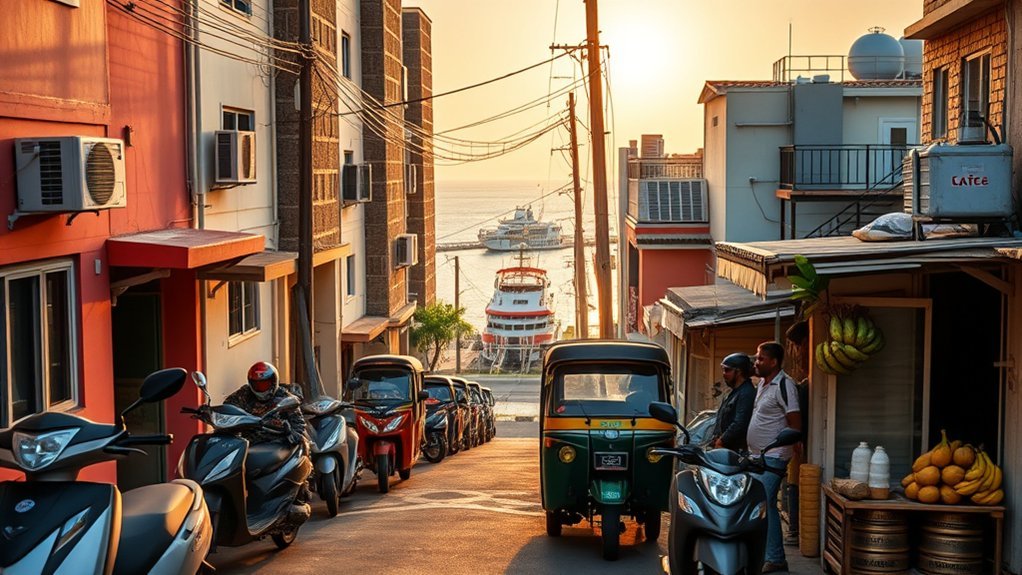
When you budget for daily life in the Maldives, transport and utilities are surprisingly affordable compared with many Western cities: basic utilities for a two-person apartment in Malé run about $162/month, gasoline is roughly $0.94/L, and taxi trips start at about $2 for the first kilometer, while a one-way bus ticket costs $0.65 and a monthly pass around $28.20.
You’ll find utilities overall lower than tourist hotspots, so your fixed housing-related costs stay manageable. For transportation, taxis are convenient and relatively cheap for short rides, but fuel prices mean driving adds up if you use a lot of private boats or rental vehicles.
Buses cost under a dollar per trip, yet they can be unreliable, so factor in occasional taxis or rideshares. Eating out at budget restaurants costs about $6, well below U.S. averages, which reduces daily food expenses.
Combined, utilities, transportation, and modest dining keep monthly living costs noticeably lower than in the U.S., supporting a comfortable budget.
Frequently Asked Questions
How Much Money Do You Need to Live in Maldives?
You’ll need about Rf 11,700 ($768) monthly for solo living, Rf 39,400 ($2,587) for a family of four; factor rent Rf 22,000–25,000 in Malé. Use cost of living comparisons and budgeting tips to optimize.
Can a US Citizen Live in the Maldives?
Yes — you can live there: Visa requirements mean you’ll need a work permit or sponsored residence, so compare costs, join expat communities for support, budget rigorously, and weigh healthcare, rent, and local salary prospects.
What Is the Average Rent in the Maldives?
Average rent in the Maldives is about $622–$886 monthly; rental prices vary by housing options — Malé is pricier (Rf22,000–25,000/$1,450–$1,640), while local islands offer considerably lower, budget-friendly alternatives.
Can I Live in Maldives Permanently?
Yes — you can live in Maldives permanently if you meet visa requirements and residency options: secure a work permit, invest in property or start a business. Compare costs, factor rent, insurance, and stable income for budget planning.
Conclusion
You’ll see the Maldives isn’t a bargain compared with many U.S. cities: rents in Malé and resort-adjacent islands can outpace mid-sized U.S. markets, while groceries and dining often carry a premium because almost everything’s imported. Healthcare and international insurance add predictable extra lines to your budget, and inter-island transport lifts costs further. If you plan carefully — prioritize housing location, cook more, and buy local — you’ll tame the numbers and sail your finances toward stability.


